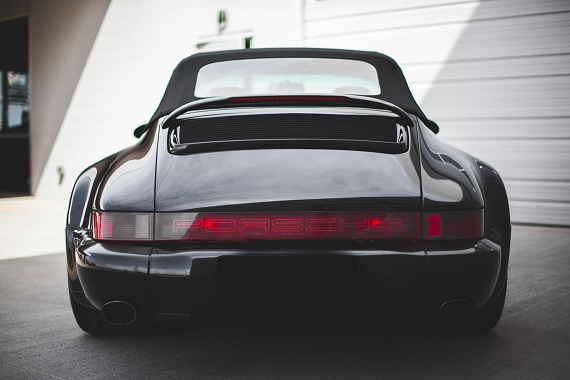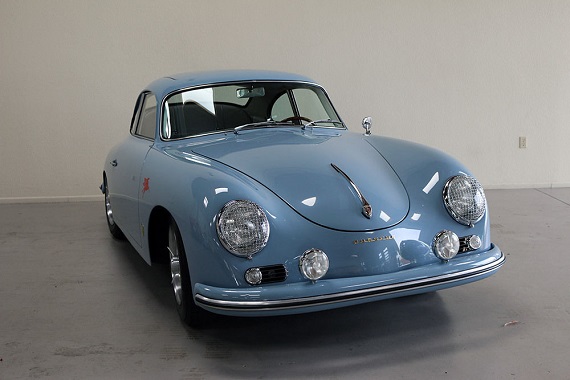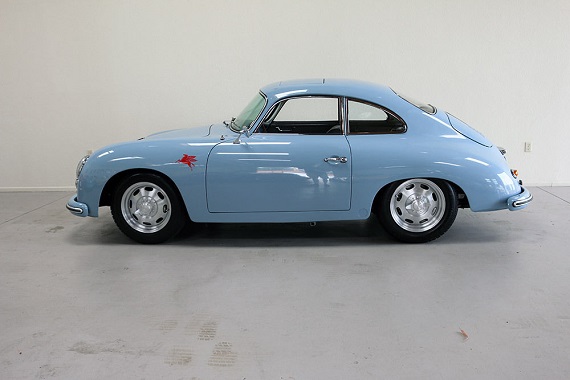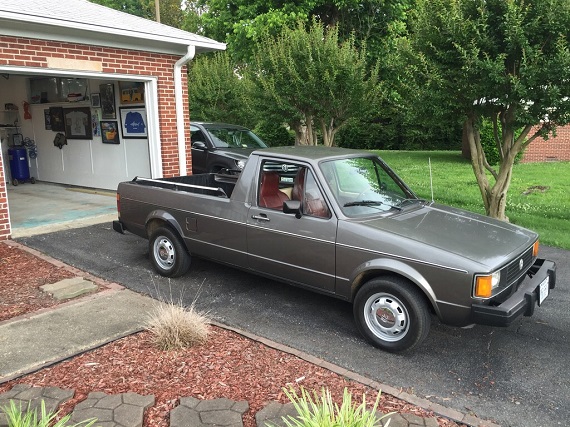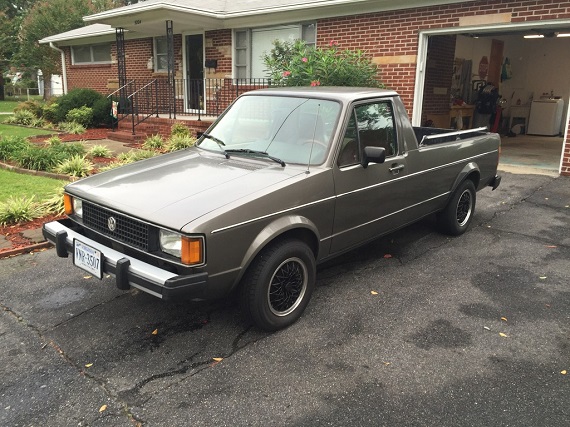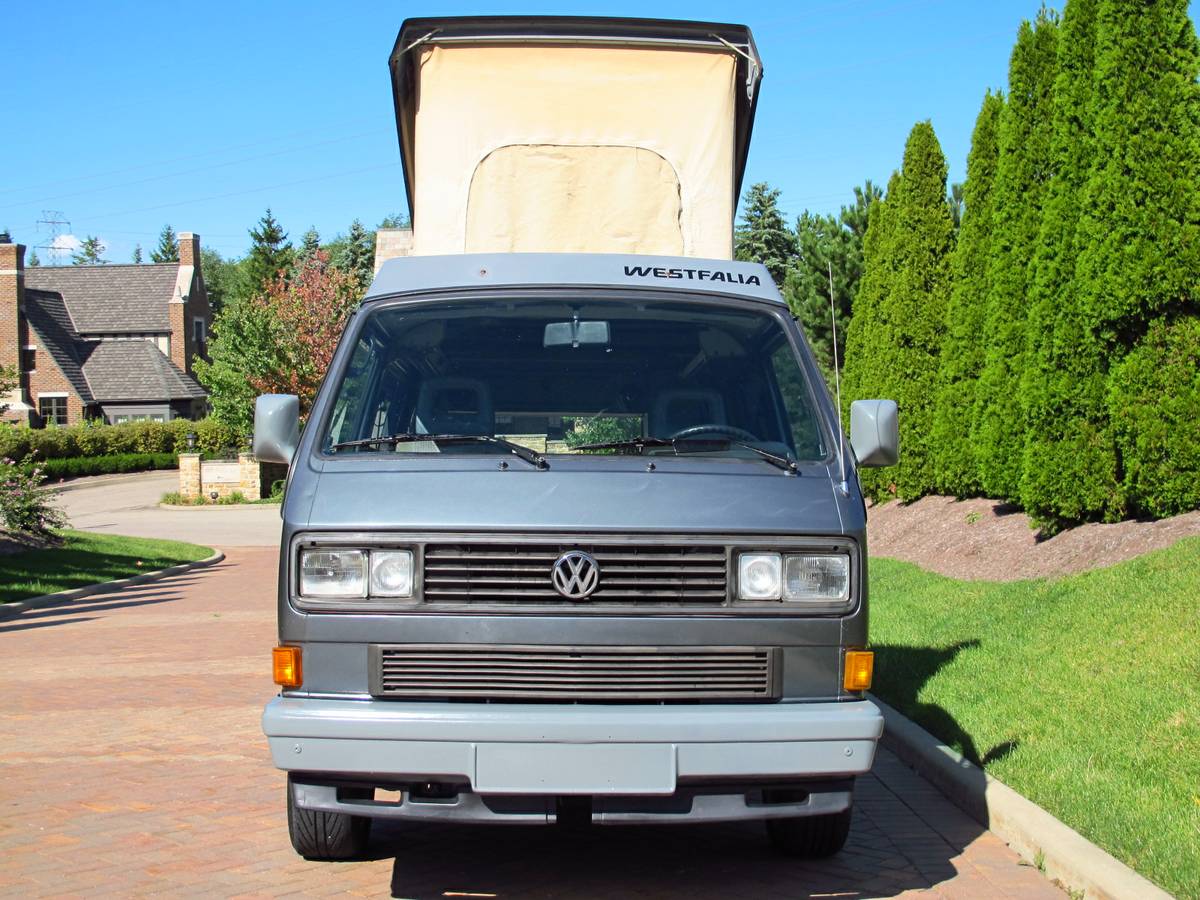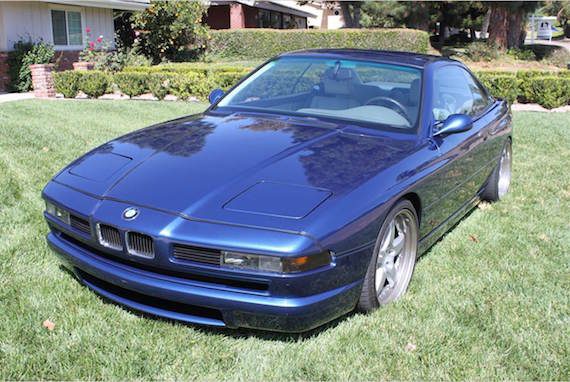 The E31 8-series (1989-1999) was available in 840Ci, 850Ci and 850CSi guises. The 840 came with a 4.0 liter V8 (later upgraded to 4.4 liters), while the 850 was powered by a 5.0 liter V12 motor. This engine was bored out to 5.6 liters for the range-topping CSi version. (The cousin of an abandoned project to build an M8, the CSi also came with a 6-speed manual gearbox, stiffer steering and suspension, and a model-specific bodykit.) Low slung and sleek, with pop up headlights, no B-pillars and a wedge-shaped profile, the 8-series was undeniably gorgeous. It was also incredibly expensive, both to buy and to repair, and a little underwhelming, particularly in entry level form, where the car’s performance never really matched the highly exotic exterior. That last criticism now seems a little unfair, since these cars were sold as grand tourers, not out-and-out sports cars. Still, the 8-series has remained somewhat under appreciated. As a result, entry level models can be found for a fraction of their original cost. This car is indeed a base model 840Ci, but it’s definitely not cheap. That’s because it carries a number of desirable features and upgrades, including some more usually found on the CSi model.
The E31 8-series (1989-1999) was available in 840Ci, 850Ci and 850CSi guises. The 840 came with a 4.0 liter V8 (later upgraded to 4.4 liters), while the 850 was powered by a 5.0 liter V12 motor. This engine was bored out to 5.6 liters for the range-topping CSi version. (The cousin of an abandoned project to build an M8, the CSi also came with a 6-speed manual gearbox, stiffer steering and suspension, and a model-specific bodykit.) Low slung and sleek, with pop up headlights, no B-pillars and a wedge-shaped profile, the 8-series was undeniably gorgeous. It was also incredibly expensive, both to buy and to repair, and a little underwhelming, particularly in entry level form, where the car’s performance never really matched the highly exotic exterior. That last criticism now seems a little unfair, since these cars were sold as grand tourers, not out-and-out sports cars. Still, the 8-series has remained somewhat under appreciated. As a result, entry level models can be found for a fraction of their original cost. This car is indeed a base model 840Ci, but it’s definitely not cheap. That’s because it carries a number of desirable features and upgrades, including some more usually found on the CSi model.
Month: October 2016
Have you been living under a rock? Then here’s a news story – Porsche 911s are pretty hot in the marketplace right now. Consider yourself updated! For the rest of us, this is pretty old news. And by pretty old, I mean they’ve always been very expensive. Take this 1992 Porsche America Roadster, for example. In 1992, you’d have to plunk down $88,000 just for the base price. Most owners left dealers the best part of further $10,000 lighter. That translates to $151,000 or more today, and if you pop over to your Porsche configuration tool it won’t take you long to realize that amount buys you a lot of convertible Porsche today; you’re only about $20,000 away from the base price on the Turbo. Yet underneath the bulging exterior of the America Roadster was a standard horizontally-opposed 3.6 liter with no forced induction producing 247 horsepower. If you’re counting, that’s a little less than half what the new Turbo offers you.
So what did the America Roadster offer, then? Well, you got the look of a Turbo and limitless sky. You also got the brakes, suspension and wheels from the Turbo to help fill out those wide arches. But to really differentiate the model, Porsche decided to release only 250 of them to the public. That makes them about four times more rare than the already quite-infrequently seen Speedster model, and therefore pretty desirable in the collectable 964 spectrum today. Exclusivity of any special model 911 certainly makes them quite special and helps to separate collector examples from those who just pop down to the dealers to buy an off-the-shelf 911 Turbo:
CLICK FOR DETAILS: 1992 Porsche 911 America Roadster
1 CommentA little while back I featured a 2012 Porsche 911 Turbo with a paint-to-sample exterior in Meissen Blue. It’s a color I was unfamiliar with and had never seen but which has early roots in Porsche’s history with the 356. It’s a color that really grows on you, and which we might think as beginning a line that would run through Gulf Blue and Glacier Blue as some of the lighter blues in the Porsche catalog. They’re really great colors and I think they work especially well on vintage Porsches. The car we see here takes us back to that original use of the color: a Meissen Blue 1957 Porsche 356A Coupe, located California, with a few modifications that have garnered it the ‘outlaw’ moniker. As outlaws go it’s a more subdued version of the species and retains much of the vintage charm of the 356 itself.
CLICK FOR DETAILS: Meissen Blue 1957 Porsche 356A Coupe on eBay
Comments closedThe advertising tag line for the 1982 Volkswagen Rabbit Pickup was “So American, it’s not available in Germany”. Since the mid 1980s, though, the opposite has been true as the truck range of Volkswagen was removed from the U.S. lineup. In some ways, that’s a bit strange since the small truck market was so strong in the mid-to-late 1980s, but starting in the 90s and culminating in the early 2000s, the small truck market evaporated as the crossover to large trucks became so easy and prevalent. But big trucks have gotten very expensive, and smaller trucks (which really are the size of 1980s full sized trucks) are experiencing a minor resurgence – so much so that VW is rumored to be thinking of bringing the Amarok starting as early as next year. So, let’s take a look back at where the VW pickup began:
CLICK FOR DETAILS: 1982 Volkswagen Rabbit Pickup on eBay
Comments closedWhile our author Nate has been on sabbatical, I have to admit we’ve had a dearth in coverage of his favorite subject – the Vanagon. Slow, boxy and rust prone, there is plenty to poke fun at every time a Vanagon comes to market. But to me what’s amazing is the package that the Vanagon offers. There’s a simplistic utility to the model which belies its near-universal appeal and recognition. And it’s hard to argue with the adventure aspect which comes with ownership, but also opens new possibilities to life. Over the past few years my wife and I have discussed touring the country and visiting the National Parks with an Airstream. They’re seriously vintage-chic these days, so buying a good condition one can be prohibitively expensive to being with. Then, you need a vehicle to tow it with, quite literally doubling the complexity of your journey. This makes the Vanagon an interesting alternative for many adventure seekers, as you get a different version of camp couture in a package capable of bring you to the next site on its own. Today’s 1989 Vanagon Westfalia is just that sort of package:

